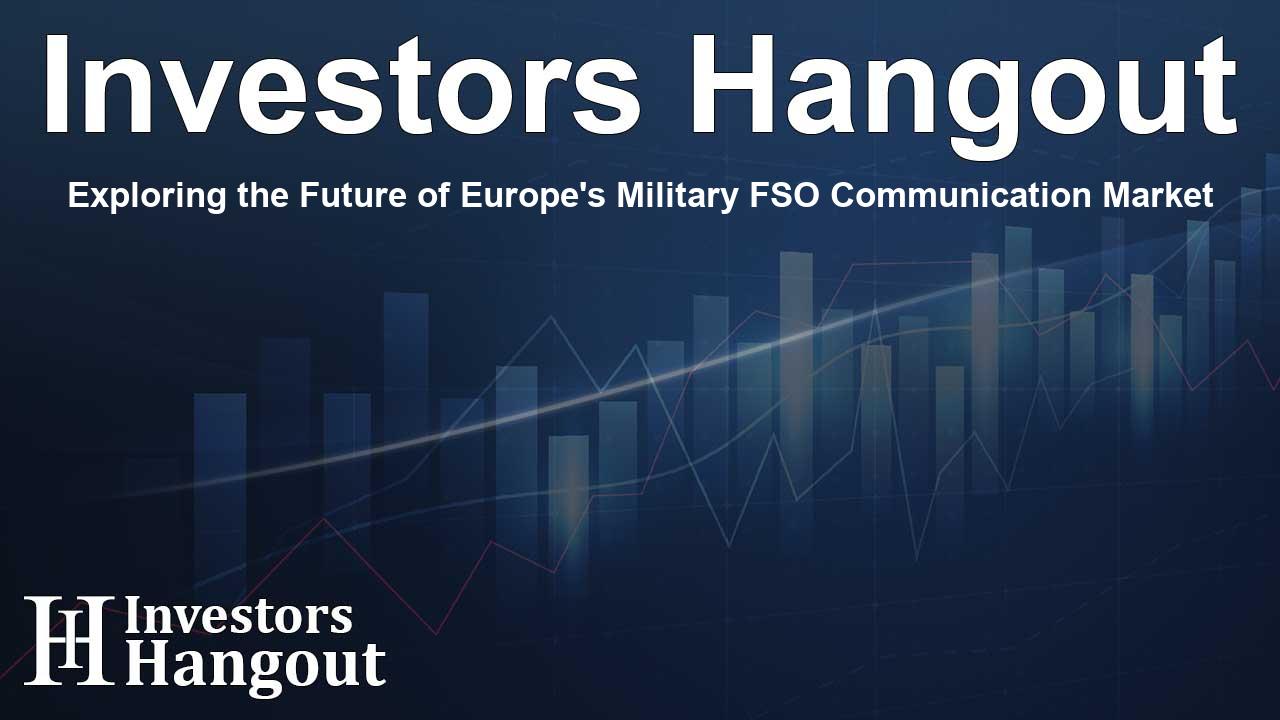Exploring the Future of Europe's Military FSO Communication Market

Introduction to the Military Free Space Optics Communication Market
The Military Free Space Optics Communication (FSO) market in Europe is witnessing an impressive trajectory of growth. The industry, initially valued at approximately US$ 245.32 million, is expected to soar to US$ 1,297.51 million by 2035. This remarkable expansion can be attributed to the increasing demand for secure and fast communication systems in military applications, driven by advancements in optical technology.
Market Dynamics Influencing Growth
Factors Behind Market Growth
The launch of sophisticated military operations necessitates reliable communication systems. The need for secure, high-speed channels has led to a surge in the adoption of FSO technology which primarily utilizes light to transmit data. Its deployment in challenging environments highlights the technology's resilience and efficiency.
Technological Advancements in FSO
The FSO industry benefits from continuous technological innovations. Enhanced optical technologies have improved the reliability and speed of data transmission significantly, facilitating rapid broadband deployment and reduced infrastructure costs. Furthermore, personal long-term evolution (LTE) networks are increasingly integrating FSO, catering to modern communication needs.
Applications of FSO Technology
FSO communication channels serve a diverse array of applications. These include:
- Storage area networks (SAN)
- Outdoor wireless access
- Wide area network (WAN) bridging
- Last-mile access
- Military communications
The increasing bandwidth demand and the growing emphasis on speedy communications are significant drivers for this technology in military settings.
Key Players in the FSO Market
Numerous companies are at the forefront of the global FSO communication sector, contributing to its advancement and adoption:
- Cailabs
- Coherent Corp.
- FOG Photonics, Inc.
- FSO Instruments
- fSONA
- General Atomics
- Honeywell International Inc.
- JSC Mostcom
- Kratos Defense & Security Solutions, Inc.
- Mitsubishi Electric Corporation
Recent Developments in the Industry
Companies are actively engaging in initiatives to expand their capabilities in the FSO communication space. For example:
- Nokia (Finland): In recent announcements, Nokia has enhanced its optical networking prospects through strategic acquisitions, accelerating advancements that might benefit military applications.
- Mynaric AG (Germany): The firm has been integrating FSO solutions with military satellite systems and airborne platforms, showcasing excellence in fostering secure communication systems.
Challenges Facing the FSO Communication Market
Though the future appears bright, the FSO market isn’t devoid of challenges:
Atmospheric Interference
One of the foremost issues includes atmospheric turbulence, which can impair transmission quality. Conditions like fog, bright sunlight, or rainfall pose significant barriers to effective communication, requiring strategic solutions to alleviate these challenges.
Need for Clear Line of Sight
The FSO technology necessitates an unobstructed line of sight. Interference from physical obstacles can disrupt communication channels, making site assessments crucial before installation.
Regional Insights
North America currently dominates the global FSO communication market, holding a significant revenue share due to well-established industries and a robust framework for research and innovation. The European market, however, is rapidly expanding, driven by significant defense budgets and advanced military technology initiatives.
Market Availability and Future Perspectives
As the demand for secure communication continues to climb, the FSO market is projected to grow at a CAGR of 16.27% from 2025 to 2035. By enhancing its capabilities, the industry looks set to become integral to military operations across Europe.
Frequently Asked Questions
Q1. What is the projected market size for FSO communication in 2035?
The market is expected to reach US$ 1,297.51 million by 2035.
Q2. What factors are driving the growth of the FSO communication market?
An increase in the demand for secure communication systems and advancements in optical technology primarily drive the market.
Q3. How does FSO technology benefit military communications?
FSO technology allows for high-speed data transmission while overcoming common wireless communication challenges, which suits military applications well.
Q4. What challenges does the FSO market face?
Challenges include atmospheric conditions that affect transmission quality and the need for a clear sight path for effective operation.
Q5. Who are the main players in the FSO communication market?
Key companies include Nokia, Mynaric, Cailabs, and Mitsubishi Electric Corporation among others.
About The Author
Contact Hannah Lewis privately here. Or send an email with ATTN: Hannah Lewis as the subject to contact@investorshangout.com.
About Investors Hangout
Investors Hangout is a leading online stock forum for financial discussion and learning, offering a wide range of free tools and resources. It draws in traders of all levels, who exchange market knowledge, investigate trading tactics, and keep an eye on industry developments in real time. Featuring financial articles, stock message boards, quotes, charts, company profiles, and live news updates. Through cooperative learning and a wealth of informational resources, it helps users from novices creating their first portfolios to experts honing their techniques. Join Investors Hangout today: https://investorshangout.com/
The content of this article is based on factual, publicly available information and does not represent legal, financial, or investment advice. Investors Hangout does not offer financial advice, and the author is not a licensed financial advisor. Consult a qualified advisor before making any financial or investment decisions based on this article. This article should not be considered advice to purchase, sell, or hold any securities or other investments. If any of the material provided here is inaccurate, please contact us for corrections.
